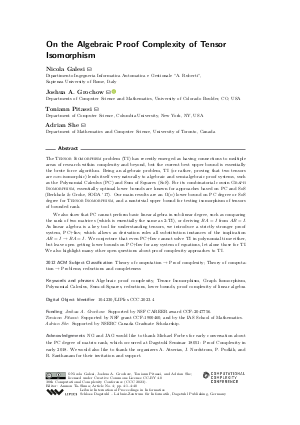LIPIcs.CCC.2023.4.pdf
- Filesize: 1.01 MB
- 40 pages

 Creative Commons Attribution 4.0 International license
Creative Commons Attribution 4.0 International license








Feedback for Dagstuhl Publishing